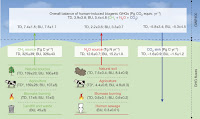In the great book-keeping of climate change, scientists have just discovered a big mistake. They have been wrong, they now think, to count on the mountains, the plains, the forests and the grasslands as an agency that slows climate change by absorbing carbon dioxide.
It does absorb carbon dioxide. But the chilling news is that the soil itself may be making the world warmer.
That is because humans have changed the way the landscape and its living things works, and now – thanks to those other greenhouse gases, methane and nitrous oxides, from cattle, fertilizers, manure and agriculture – the terrestrial biosphere is actually accelerating climate change.
Twenty-three scientists from 16 laboratories and institutions report in Nature journal that they re-examined the sums on which climate forecasts depend.
They concluded: “We find that the cumulative warming capacity of concurrent biogenic methane and nitrous oxide emissions is a factor of about two larger than the cooling effect resulting from the global land carbon dioxide uptake from 2001 to 2010.”
Read more at Humans Tilt Climate Books Out of Balance

No comments:
Post a Comment